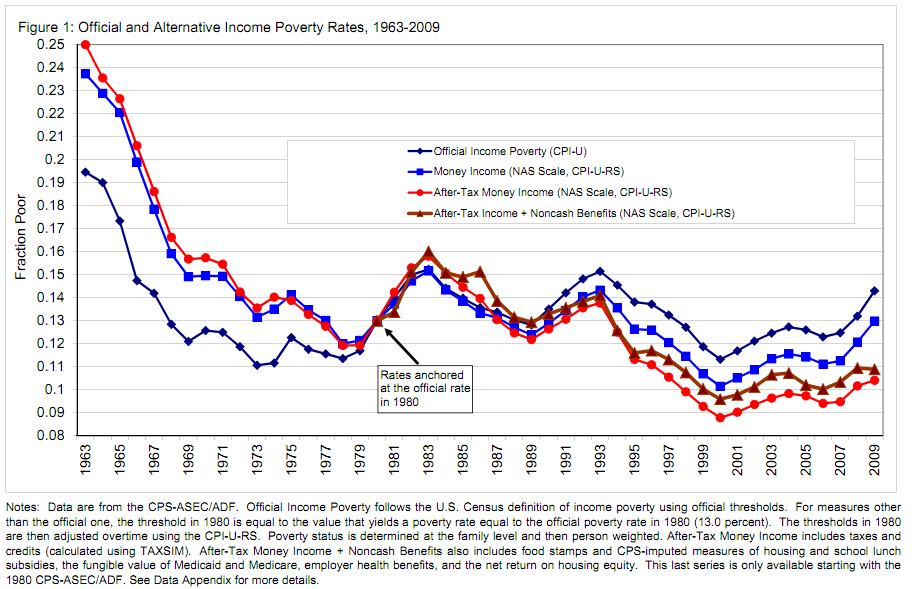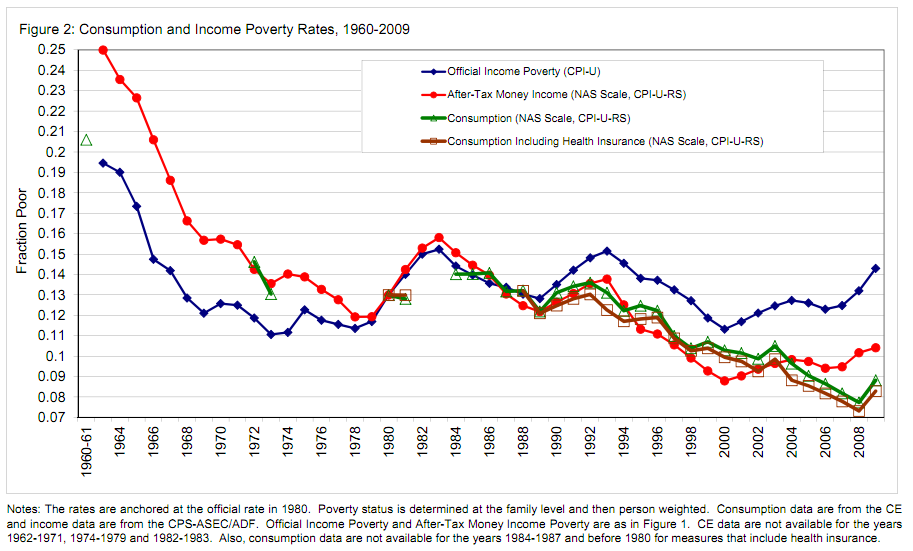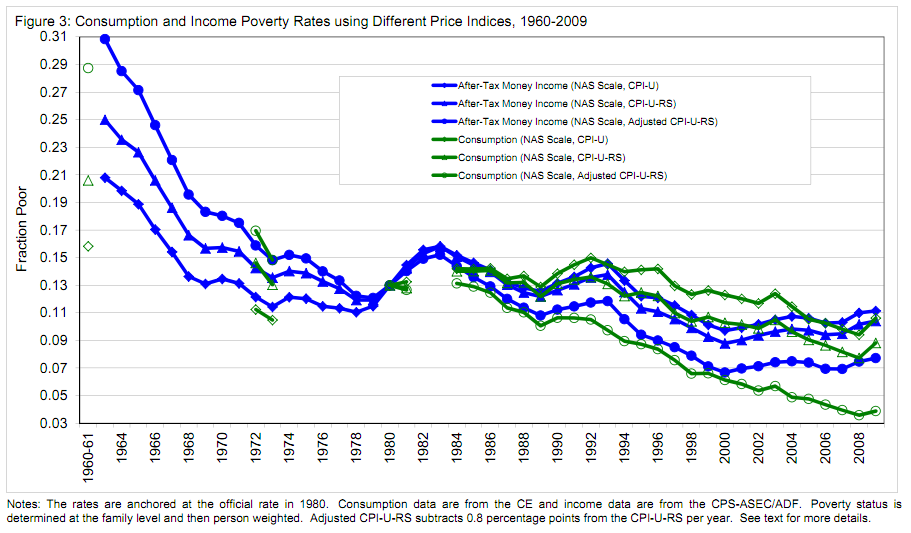What's the Best Way to Measure Poverty: Income or Consumption?

Creatas
Yesterday we learned that 15.1% of Americans were living in poverty in 2010, the highest level since 1993, and up nearly 1 percentage point from 2009, when it was 14.3%. That data is based on an income measurement which shows that in 2010, 46.2 million Americans were living below the poverty line, defined as $22,314 a year for a family of four.
But income is just one way to measure poverty, and a particularly tricky (and narrow) way at that – so says Notre Dame economist and National Poverty Center research affiliate, James Sullivan, who believes that to measure poverty strictly by income fails to accurately reflect people’s true economic circumstances. Income alone ignores the effects of things like the Earned Income Tax Credit, Medicaid, food stamps, and housing subsidies. From a Notre Dame press release on Sullivan’s recent poverty research:
“Income received from food stamps, for example, grew by more than $14 billion in 2009. By excluding these benefits in measuring poverty, the Census figures fail to recognize that the food stamps program lifts many people out of actual poverty,” Sullivan says. “If these programs are cut back in the future, actual poverty will rise even more.”
Using income-based numbers only also overlooks the struggles of many Americans who are tightening their belts – those who are worried about losing their jobs or facing foreclosure, or those who devote a large chunk of their paychecks to paying off medical bills. The standard of living for these people is lower than their income would suggest.
In a recent paper, Sullivan and co-author Bruce D. Meyer of the University of Chicago, argue that consumption offers a more robust measurement of poverty than income. Their key point is that poverty, when measured correctly, has declined over time, which is contrary to official measurements. Here’s the full version of their paper. From the abstract:
This paper examines changes in the extent of material deprivation in the United States from the early 1960s to 2009. We investigate how both income and consumption based poverty have changed over time and explore how these trends differ across family types. Estimates of changes in poverty over the past five decades are very sensitive to how resources are measured. A poverty measure that incorporates taxes falls noticeably more than a pre-tax income measure. Sharp differences are also evident between the patterns for income and consumption based poverty. Income poverty falls more sharply than consumption poverty during the 1960s. The reverse is true for the 2000s, although in 2009 consumption poverty rises more than income poverty… Income based poverty gaps have been rising over the last two decades while consumption based gaps have fallen. We show that how poverty is measured affects the composition of the poor, and that the consumption poor appear to be worse off than the income poor.
Some quick highlights:
- Income and consumption measures of the poverty gap have generally moved in opposite directions in the last two decades, with income based poverty gaps rising, but consumption based poverty gaps falling.
- Sullivan and Meyer show that upward bias in the Consumer Price Index (CPI-U) has a large effect on changes in poverty over long periods of time. For example, between the early 1960s and 2009, an income poverty measure that corrects for this bias declines by 13.5 percentage points more than a comparable measure based on the CPI-U.
- Compared to the income poor, the consumption poor are less educated, less likely to own a home, more likely to live in married parent families, and much less likely to be single individuals or elderly. The fraction of the consumption poor living in married parent families is 80% higher than the fraction of the income poor living in such families in recent years.
Here are three graphs from their paper demonstrating the differences between income-based measurements of poverty, and consumption based measurements over time:




Comments